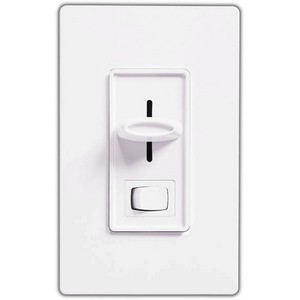Digital Timer
 In-wall digital timers are programmable 7-day switches that are designed to control exterior and interior hallway lights. They easily replace outdated mechanical timers and it automatically adjusts for daylight savings time and changes in sunset and sunrise times. In case of a power outage the settings are stored for 24 hours. Once the city is selected, the timer knows when to turn the lights on and off. So with digital timers you can literally “set it and forget it” and the days of constantly adjusting antiquated metal timers are over.
In-wall digital timers are programmable 7-day switches that are designed to control exterior and interior hallway lights. They easily replace outdated mechanical timers and it automatically adjusts for daylight savings time and changes in sunset and sunrise times. In case of a power outage the settings are stored for 24 hours. Once the city is selected, the timer knows when to turn the lights on and off. So with digital timers you can literally “set it and forget it” and the days of constantly adjusting antiquated metal timers are over.
Occupancy Sensor
 Occupancy sensors as they are technically known are motion detectors that are used to make sure the lights are turned off when the room is unoccupied. They can be set for manual on and auto off, or auto on and auto off. In occupancy mode which is the most popular mode, the lights will turn on automatically when someone enters the room and the lights will stay on as long as the room is occupied. As soon as the room is empty the sensor will automatically turn off the lights.
Occupancy sensors as they are technically known are motion detectors that are used to make sure the lights are turned off when the room is unoccupied. They can be set for manual on and auto off, or auto on and auto off. In occupancy mode which is the most popular mode, the lights will turn on automatically when someone enters the room and the lights will stay on as long as the room is occupied. As soon as the room is empty the sensor will automatically turn off the lights.
Dimmer Switch
 When a certain mood or ambience is needed and the lights need to be lowered, dimmer switches are the perfect tool. By having the ability to create an atmosphere with less-intense ambient light, the result is a more relaxed environment that has the added benefit of lower energy consumption. The lower the light levels the greater the savings.
When a certain mood or ambience is needed and the lights need to be lowered, dimmer switches are the perfect tool. By having the ability to create an atmosphere with less-intense ambient light, the result is a more relaxed environment that has the added benefit of lower energy consumption. The lower the light levels the greater the savings.
Countdown Timer
 When it is important to ensure lights, exhaust fans, or motors are only operating for a specific period of time, countdown timers are your best option. Countdown timers can help you save money by automatically turning off electrical devices at a preset time. The most energy-efficient countdown timers will turn off devices after 30 minutes, however there are timers that will allow electrical devices to stay on up to 4 hours.
When it is important to ensure lights, exhaust fans, or motors are only operating for a specific period of time, countdown timers are your best option. Countdown timers can help you save money by automatically turning off electrical devices at a preset time. The most energy-efficient countdown timers will turn off devices after 30 minutes, however there are timers that will allow electrical devices to stay on up to 4 hours.
Interior Lighting Control – Ceiling Mount Switches
Ceiling mount sensors are ideal for rooms where wall mount sensors will not work because they are blocked by cubicles, desks, cabinets, refrigerators, or some other large object. They are also better suited for ‘T’ shaped hallways. By placing the sensor on the ceiling, any time a person enters the sensor’s 360° field of vision, the lights will come on automatically and turn off automatically once the area is unoccupied.
Exterior Lighting Control – Commercial Digital Timer
Commercial digital timers are programmable 7-day switches that are designed to control exterior lights. They have the same footprint as mechanical timers and can be easily swapped out in less than 15 minutes. They are easy to program and it automatically adjusts for daylight savings time and changes in sunset and sunrise times. In case of a power outage the settings are stored for up to 4 days. Once the city is selected, the timer knows when to turn the lights on and off. So with commercial digital timers you can literally “set it and forget it” and the days of constantly adjusting antiquated metal timers are over.
Exterior Lighting Control – Photocells
The most popular residential and commercial exterior lighting control that ensures the lights are turned on when the sun sets is the photocell which utilizes dusk to dawn technology. When the sun sets photocells will turn the lights on and when the sun rises it turns the lights off. This is an easy way to “flip the switch” without physically flipping the switch.
Exterior Lighting Control – Motion Detectors
Instead of simply leaving on outdoor lights from dusk to dawn wasting energy, an alternative is to have motion activated lights or motion detectors. Motion detectors can turn on exterior lights for security purposes or for the added convenience of having enough light to find the right key while balancing an arm full of groceries. Coverage area is 180° and they will automatically turn on the lights when motion is detected and will turn off the lights after a pre-selected time delay of up to 12 minutes. Integrated photocells will prevent lights from turning on when motion is detected during daylight hours which also saves energy.

